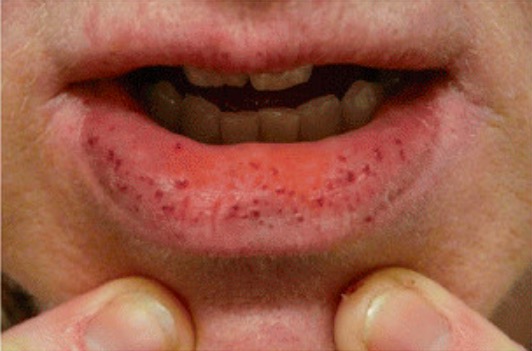Playlist
Show Playlist
Hide Playlist
Hemolytic Uremic Syndrome
-
Slides BleedingDisorders QuantitativePlateletAbnormalities.pdf
-
Download Lecture Overview
00:01 Here we have hemolytic uremic syndrome. 00:05 Who is this patient? This is a patient most likely going to be a child, who ends up then consuming undercooked beef. 00:11 In the undercooked beef, there's a particular type of E.coli called E.hec or E. coli hemorrhagic type, and the particular strain is called O157:H7. 00:23 Now because of this, take a look at the name here, uremia, what does that mean to you? Renal failure. 00:31 After consuming the undercooked beef containing the pathogen, unfortunately, the child's kidneys are going to start deteriorating but luckily, the child goes on emergency dialysis, and the kidney comes roaring back. Thank goodness for that. 00:51 So here we have bacterial toxins E, remember this shiga-like. 00:55 In other words, we have your E.coli, or entero type of hemorrhagic E. coli, leading to extensive formation of platelet microthrombi and thrombocytopenia. 01:03 So as a general rule, TTP is to an adult, as HUS as to a child. 01:11 Seen in children, signs and symptoms are quite similar to TTP, but renal failure is the common, most severe. 01:17 The treatment, most will recover luckily with weeks, so therefore supportive therapy with emergency dialysis, not permanent, and some, however, unfortunately, may develop chronic renal failure. 01:30 There's always that risk, isn't there?
About the Lecture
The lecture Hemolytic Uremic Syndrome by Carlo Raj, MD is from the course Hemostasis: Basic Principles with Carlo Raj.
Included Quiz Questions
Typical hemolytic uremic syndrome is associated with which of the following?
- Bacterial infection
- Connective tissue disorders
- Excessive alcohol
- Viral infection
- Drugs
Which of the following foods is most likely to be a source of human infection with enterohemorrhagic Escherichia coli?
- Undercooked beef
- Undercooked poultry
- Honey
- Raw seafood
- Smoked fish
Customer reviews
5,0 of 5 stars
| 5 Stars |
|
1 |
| 4 Stars |
|
0 |
| 3 Stars |
|
0 |
| 2 Stars |
|
0 |
| 1 Star |
|
0 |
i love all his lectures. i like that he always repeats everything compared to others.




